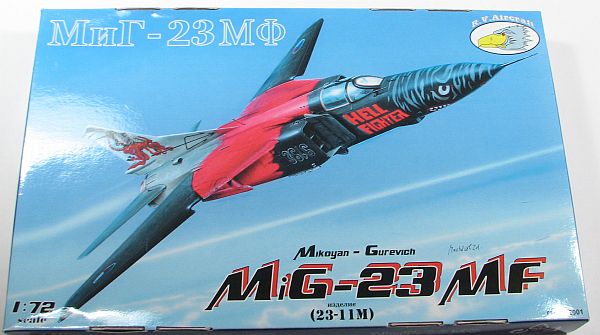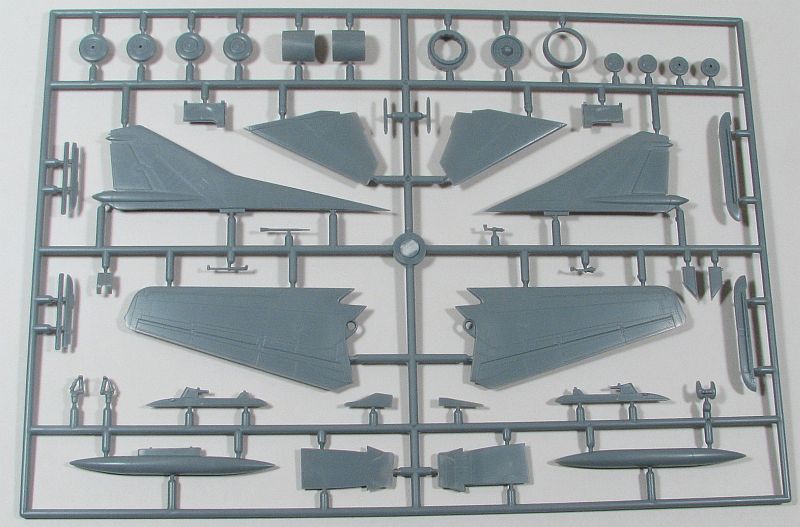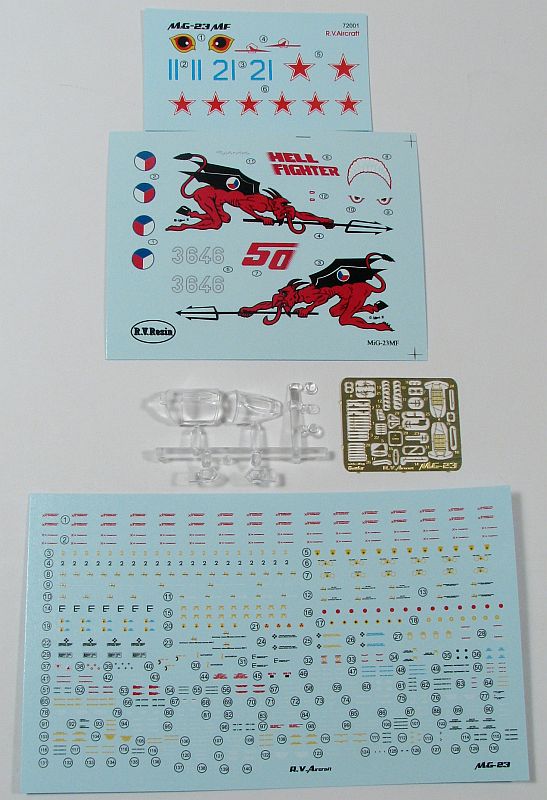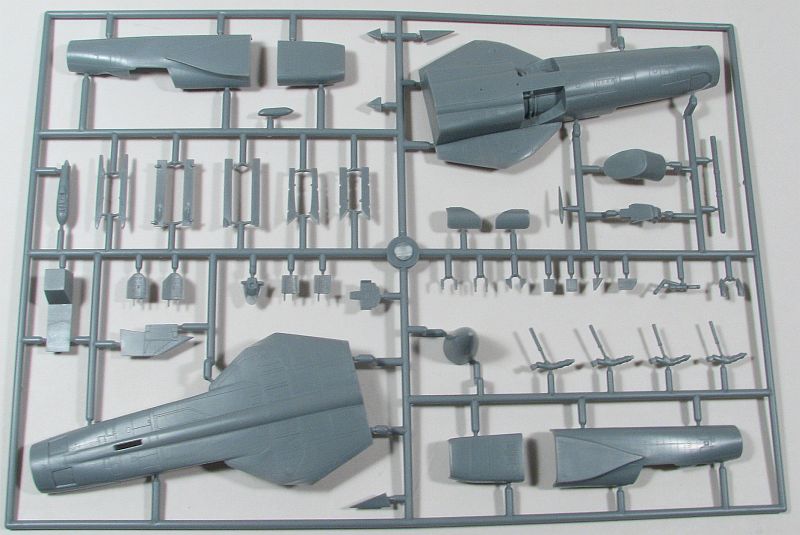
RV Aircraft 1/72 MiG-23MF "Flogger"
By Matt Bittner
Introduction
The MiG-23 was the first fighter designed by the Mikoyan-Gurevich bureau that had not only variable-incidence wings, but also engine intakes on the side of the fuselage. It was also the first attempt by the Soviet Union to incorporate a "look-down/shoot-down" radar to be used in conjunction with "beyond visual range" missiles. While the aircraft no longer serves with the VVS, it is still in use with other countries around the world.
The Kit
The RV Aircraft 1/72 MiG-23 "Flogger" contains parts necessary to make different versions. You'll need to study the instructions carefully to figure out which plastic pieces you need for the version you're making. So, while this particular release is labeled as the MiG-23MF, if you decide while building it you would rather make a different version, just study the construction drawings for the parts needed. I mention this because while the kit contains a total of 100 pieces of gray injected plastic, you won't use all those pieces. In addition, the kit comes with a clear sprue of seven pieces and a fret of photoetch with a lot of pieces (sorry, I kept losing count).Decals are for three aircraft:
- MiG-23MF "Hellfighter", the Czech extremely colorful aircraft with a "devil" on the tail
- MiG-23MF, Soviet "Blue 11" wtih eyes on the nose (and finsihed in three-color camouflage over light blue undersides)
- MiG-23MF overall light gray, "Blue 21"
Decals are nicely printed and appear to be in register.
There are multiple pages of instructions. You'll want to use the "numbered step" instructions for construction (as opposed to the single page sheet). This is because there are a lot of smaller “windows” on the instructions that help with figuring out which version of the MiG-23 you’re going to build, and what parts to use for that version. So it is definitely in your best interest to read over the instructions multiple times before starting construction. I would also use a highlighter to highlight those areas that show what needs to be added for the version you’re building. Anything to help with kit assembly.The first instruction step is creating the cockpit. The seat and control column (and a piece of photoetch) is added to the tub and the tub added to another part that is put into the forward fuselage section, at the same time as the injected instrument panel is added. Now the forward fuselage halves are glued together and a couple of external pieces are added to that assembly.
Next is adding the nose cone, after adding (according to the instructions) ten grams of weight. While this step would have you add the nose pitot at this time as well, I would leave that off until the end so it won’t break off during final construction and painting.
Now the wings are added to the fuselage center section. While they can be made to move, there is no “mechanism” to ensure they move in sync with one another. If that bugs you then you’ll need to add something to be sure moving one wing will move the other – I believe the old (and inaccurate) Hasegawa kit had just such a mechanism. After this is all put together then you move to building up the exhaust.From here the rest of the model is built up. Add the fin/rudder (again, dependent on the specific MiG-23 type you’re building) along with the vertical tail parts and intakes. There are also antenna and speed brakes to add along with the clear pieces.
Now it’s time to turn the model over and add the strakes to the rear fuselage and the gun to the forward fuselage. The instructions also have you add the landing gear at this point, but again I would wait until after painting and decaling is finished.
Once it’s all together you have an accurate 1/72 MiG-23 in your collection
Conclusion
The 1/72 modeling world has been waiting for an accurate MiG-23 for quite some time. While there are a couple of small shape errors with this kit (nothing I’m going into) it’s far more accurate than the Hasegawa and Academy kits. Do not hesitate to purchase one of these if you want a MiG-23 in your 1/72 model collection.
Huge thanks to UMM-USA for supplying the review kit.



